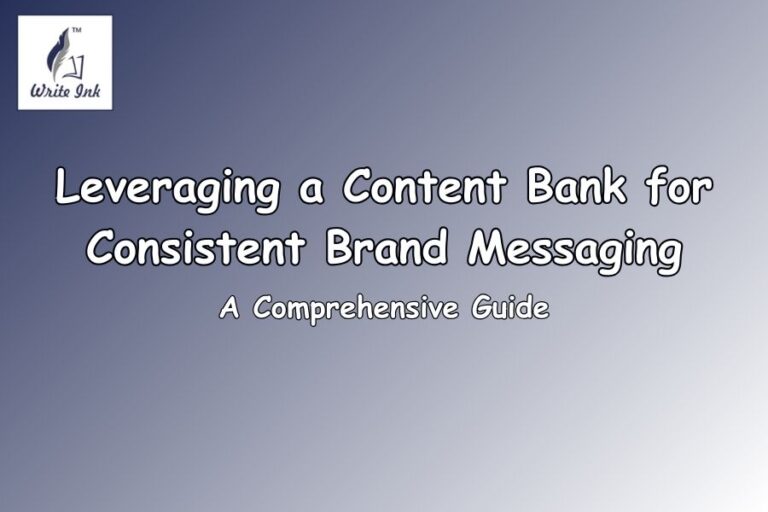Mastering Content Writing for E-Commerce Success
In the busy realm of online selling, content writing is crucial for attracting customers, increasing sales, and fostering loyalty to your brand. Whether it’s creating convincing product descriptions, engaging blog posts, or impactful social media campaigns, crafting compelling content is vital for any online business to thrive.
What is E-Commerce Content?

E-commerce content writing involves creating various types of written materials specifically for online retail platforms. This includes product descriptions, category pages, landing pages, blogs, email newsletters, and social media posts. Each of these serves a unique purpose in attracting and retaining customers throughout their buying journey.
Effective content writing for e-commerce doesn’t just inform but also persuades customers to take action. Product descriptions, for example, need to be brief yet descriptive, highlighting key features and benefits to entice potential buyers. Category pages should offer easy navigation, helping users find products quickly. Landing pages need to be compelling, with persuasive writing and clear calls to action that drive conversions.
Blogs and articles play a role in providing valuable insights and information relevant to the target audience, establishing the brand as an authority in the industry. Email newsletters nurture leads and cultivate customer relationships through personalized content and promotions. Social media posts showcase products in an engaging and visually appealing manner, fostering community engagement and brand loyalty.
In summary, content writing for e-commerce encompasses various written materials tailored to online retail platforms, each serving a specific purpose in attracting and retaining customers throughout their buying journey.
Tips for effective content writing

When it comes to effective content writing for e-commerce, there are a few key tips to keep in mind.
Understanding Your Audience: It’s essential to conduct thorough research on your target demographic. By understanding their needs, preferences, and pain points, you can tailor your content to resonate with them. This means addressing their specific interests and motivations in your writing.
SEO Best Practices: Implementing SEO Content strategies is crucial for improving the visibility of your content in search engine results. This involves keyword optimization and metadata tagging to ensure that your content ranks well. By incorporating relevant keywords into your content and optimizing meta tags and descriptions, you can attract more organic traffic to your website.
Clear and Compelling Product Descriptions: When writing product descriptions, be sure to clearly communicate the features, benefits, and unique selling points of your products. Use persuasive language and compelling imagery to create a sense of desire and urgency in potential customers.
Utilizing Visual Content: In addition to written content, incorporating high-quality images and videos can enhance the shopping experience for customers. Visual content not only captures attention but also helps customers visualize themselves using your products, increasing their likelihood of making a purchase.
Incorporating Calls to Action (CTAs): Guide users towards desired actions, such as making a purchase or signing up for a newsletter, with strategically placed CTAs. Whether it’s a button, link, or form, your CTAs should be clear, concise, and compelling, prompting visitors to take the next step in their customer journey.
A/B Testing and Optimization: Continuously monitor and refine your content based on performance metrics and customer feedback. Experiment with different headlines, copywriting styles, and visuals to identify what resonates best with your audience and drives the highest conversions.
By following these tips for content writing for e-commerce, you can create compelling and effective content that attracts and engages your target audience.
E-Commerce Content Strategy

In the realm of e-commerce, crafting a successful content strategy is crucial for achieving your business goals. It involves several key steps:
Setting Goals and Objectives: Clearly define what you want to achieve with your content. Whether it’s increasing sales, boosting brand awareness, or driving website traffic, having specific, measurable goals helps you stay focused and evaluate your progress. Content writing for e-commerce should always align with these objectives.
Audience Research and Persona Development: Understand your target audience inside out by developing detailed buyer personas. By delving into their demographics, pain points, and buying habits, you can tailor your content to resonate with their needs and interests. Content writing for e-commerce becomes more effective when it speaks directly to the intended audience.
Content Calendar Planning: Plan ahead by establishing a content calendar that ensures a consistent publishing schedule. This calendar should align with marketing initiatives and seasonal trends to keep your content relevant and engaging. With content writing for e-commerce, consistency is key to maintaining audience engagement.
Integration with Overall Marketing Strategy: Coordinate your content efforts with other marketing channels such as email marketing, social media, and paid advertising. This integration ensures a cohesive brand experience across all touchpoints and maximizes your reach and impact. Content writing for e-commerce should complement and amplify your broader marketing efforts.
Content Distribution Channels: Identify the most effective channels for distributing your content, be it your e-commerce website, social media platforms, email newsletters, or third-party marketplaces. Understanding where your target audience spends their time online allows you to optimize your content distribution strategy for maximum engagement. Content writing for e-commerce should be tailored to suit the specific platforms and channels where your audience is most active.
By following these steps and integrating them into your content writing for e-commerce, you can create a robust strategy that drives results and achieves your business objectives.
Content Writing for E-Commerce Website

When writing content for your e-commerce website, it’s crucial to focus on optimizing product descriptions, crafting engaging category pages, writing persuasive landing page copy, creating SEO-friendly blog posts, and designing effective email newsletter content.
Firstly, when optimizing product descriptions, make sure to provide detailed information about your products, highlighting their key features, benefits, and specifications. This helps customers make informed purchasing decisions. Use descriptive language and compelling imagery to make your products stand out. This type of content writing for e-commerce can create a sense of desire and urgency, which can lead to more sales.
Next, focus on crafting engaging category pages. Organize your products into logical categories and subcategories to streamline the browsing experience for users. Provide filters and sorting options to help customers find what they’re looking for quickly and easily. This makes it easier for them to navigate through your product offerings, increasing the likelihood of them making a purchase.
When writing landing page copy, it’s essential to develop compelling content that captures attention, builds trust, and motivates visitors to take action. Use persuasive language and clear calls to action to guide visitors towards conversion, whether it’s making a purchase, signing up for a newsletter, or contacting your sales team. This type of content writing for e-commerce can significantly impact your conversion rates.
Additionally, creating SEO-friendly blog posts is essential for driving organic traffic to your website. Research relevant keywords and topics to address common pain points and provide valuable insights to your audience. Optimizing your content for search engines can help attract more visitors and increase your website’s visibility online.
Lastly, designing effective email newsletter content is crucial for engaging with your subscribers. Personalize your newsletters by delivering relevant product recommendations, exclusive promotions, and tailored content based on subscribers’ interests. Use segmentation and personalization techniques to target specific audience segments with content that resonates with their needs and preferences.
By implementing these strategies for content writing for e-commerce, you can improve your website’s performance and drive more sales.
Social Media Content Ideas for E-Commerce

When it comes to content writing for e-commerce, it’s important to engage your audience with captivating visuals and interactive activities. Here are some simple yet effective ideas:
Showcase Products with Visuals: Use high-quality images and videos to display your products in action. Highlight their key features and benefits, demonstrating how they can solve problems or enhance customers’ lives.
Run Contests and Giveaways: Host social media contests and giveaways with enticing prizes to encourage user engagement and brand participation. This not only boosts brand awareness and reach but also creates excitement and buzz around your products.
Share User-Generated Content: Utilize customer reviews, testimonials, and photos to build social proof and credibility. User-generated content is authentic and trustworthy, influencing purchasing decisions and fostering brand loyalty.
Provide Behind-the-Scenes Content: Humanize your brand by offering glimpses of your team, production process, and company culture. This helps establish a personal connection with your audience, showcasing the people and stories behind your products.
Highlight Customer Testimonials and Reviews: Feature positive customer experiences to amplify social proof. Sharing testimonials, reviews, and success stories instills confidence and trust in your brand, motivating potential customers to make purchases.
By incorporating these strategies into your social media content, you can effectively engage your audience and drive sales for your e-commerce business.
E-Commerce Content Writing Examples

Successful Product Description: Crafting an effective product description is crucial for successful content writing for e-commerce. You want to use descriptive language that highlights the key features and benefits of your product. Addressing common pain points or objections that customers may have can help alleviate their concerns and increase their likelihood of making a purchase. By effectively communicating the value proposition of your product, you can encourage customers to take action and add it to their cart.
Engaging Blog Post Driving Sales: When creating a blog post to drive sales, it’s important to provide valuable information that resonates with your audience’s needs. By offering helpful tips, insights, or tutorials related to your product niche, you can establish yourself as an authority in the field and build trust with your readers. Incorporating subtle product recommendations or links within the content can help drive traffic to your e-commerce site and increase sales.
Effective Social Media Campaign: Social media campaigns are an essential component of content writing for e-commerce. By incorporating user-generated content, interactive elements, and compelling visuals, you can increase engagement and drive sales. Encouraging user participation through contests, polls, or challenges can help create a sense of community around your brand. By showcasing user-generated content, you can build social proof and credibility, which can ultimately lead to increased sales and customer loyalty.
Compelling Email Newsletter Content: Email newsletters are a powerful tool for reaching your audience and driving sales. By delivering personalized product recommendations, exclusive promotions, and relevant content tailored to subscribers’ interests, you can increase engagement and encourage repeat purchases. Using segmentation and personalization techniques can help ensure that your content resonates with your audience and drives action.
Optimized Landing Page: Landing page copy is essential for converting visitors into customers. Use concise, persuasive language and clear calls to action to guide visitors toward conversion. By capturing attention with compelling visuals and persuasive messaging, you can increase interest in your products and encourage visitors to take the next step in their customer journey.
Parting Wisdom

As a leading content writing agency, Write Ink understands the importance of mastering the art of content creation in the competitive world of e-commerce. Our expert team is dedicated to helping e-commerce companies capture the attention of potential customers, drive sales, and foster brand loyalty through strategic content writing. By implementing the proven strategies, tips, and examples outlined in this article, our clients can effectively harness the power of content to achieve their business objectives and thrive in the online marketplace.
With our thoughtful approach to content creation and distribution, businesses can establish meaningful connections with their audience, build trust and credibility, and ultimately drive growth and success in the ever-evolving realm of e-commerce. Remember, when it comes to content writing for e-commerce, Write Ink is your trusted partner for standing out and thriving in today’s digital landscape.
FAQs: Frequently Asked Question
What is the importance of content writing for e-commerce?
A. Content writing for e-commerce is essential for grabbing the attention of potential customers, boosting sales, and nurturing brand loyalty. It helps businesses effectively communicate their value proposition and engage with their target audience in the digital marketplace.
How can content writing help e-commerce companies achieve their business goals?
A. Content writing enables e-commerce companies to showcase their products or services, educate customers, and build trust and credibility. By implementing strategic content strategies, businesses can drive traffic to their website, increase conversion rates, and ultimately achieve their business objectives.
What are some key strategies for effective content writing in e-commerce?
A. Some key strategies for effective content writing for e-commerce include understanding the target audience, creating compelling and relevant content, optimizing content for search engines, and leveraging various content formats such as blog posts, product descriptions, and social media posts.
How can businesses measure the effectiveness of their content writing efforts in e-commerce?
A. Businesses can measure the effectiveness of their content writing efforts in e-commerce by tracking key metrics such as website traffic, conversion rates, engagement metrics (likes, shares, comments), email open and click-through rates, and sales performance.
Image Reference: Freepik
Disclaimer: All trademarks, logos, and brand names are the property of their respective owners. All company, product, and service names used in this website are for identification purposes only. Use of these names, trademarks, and brands does not imply endorsement.







